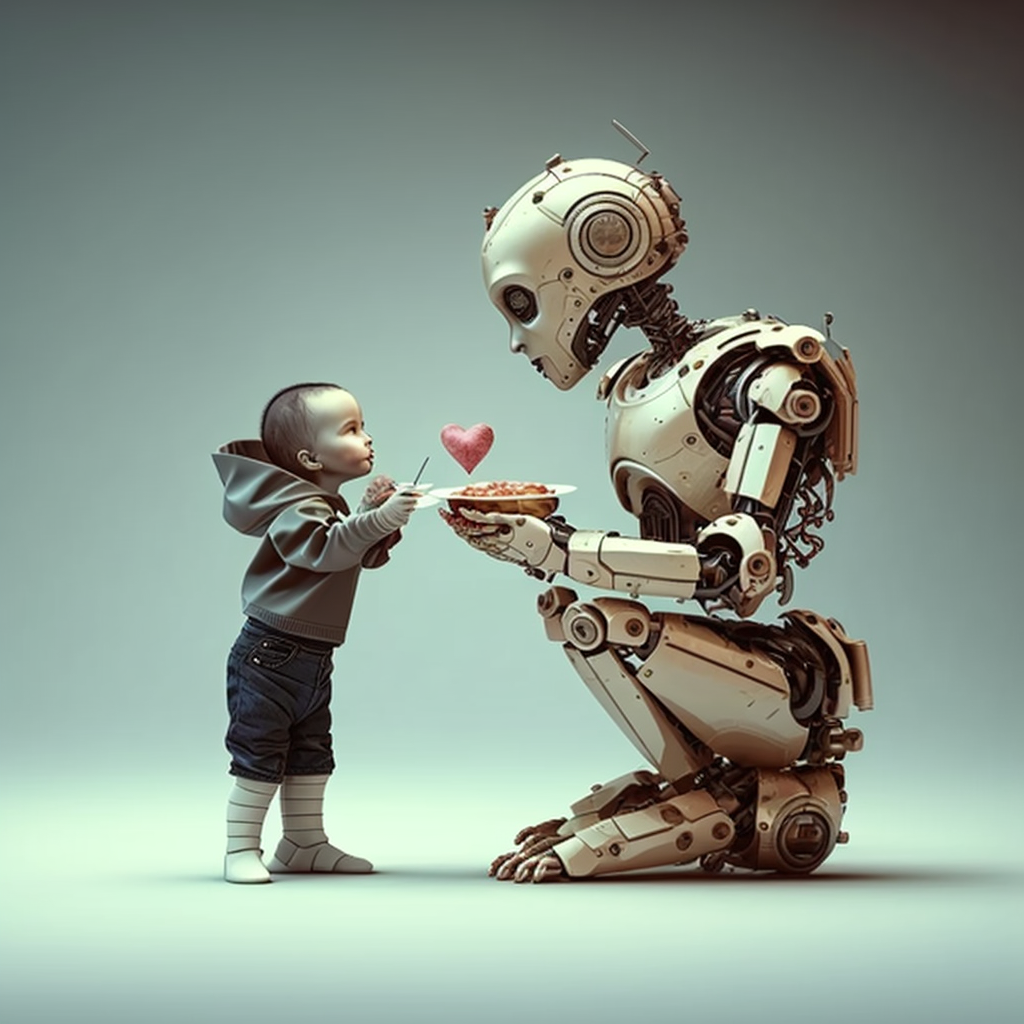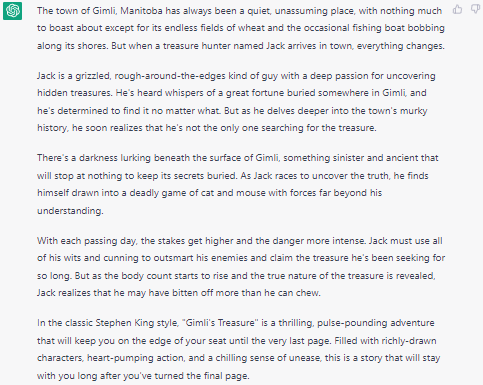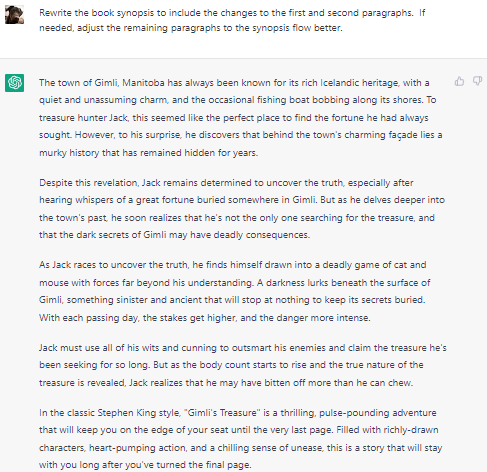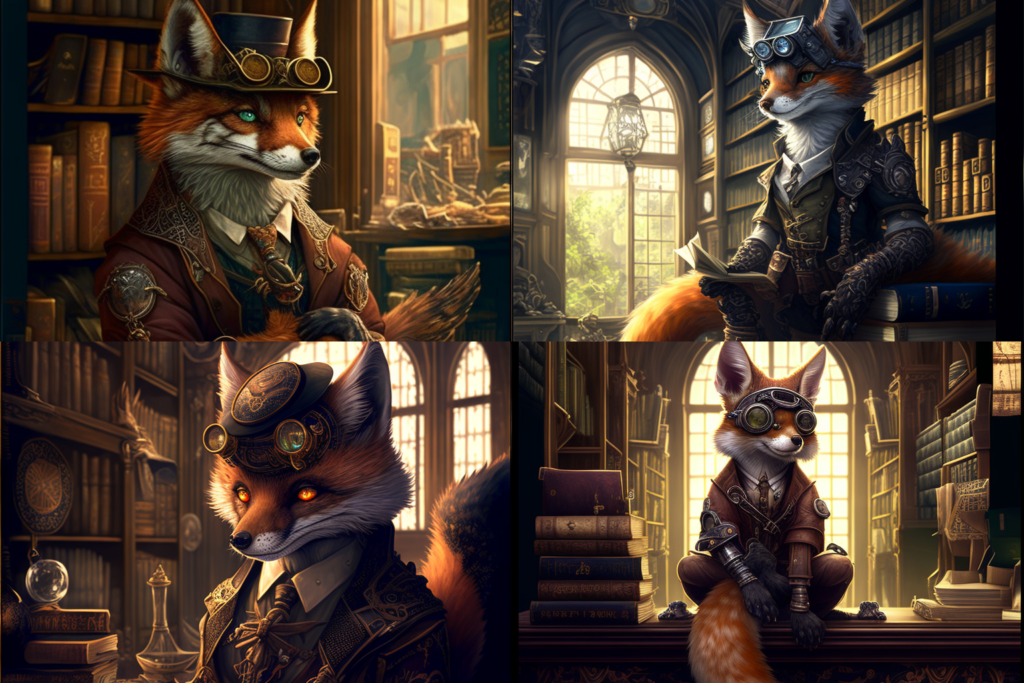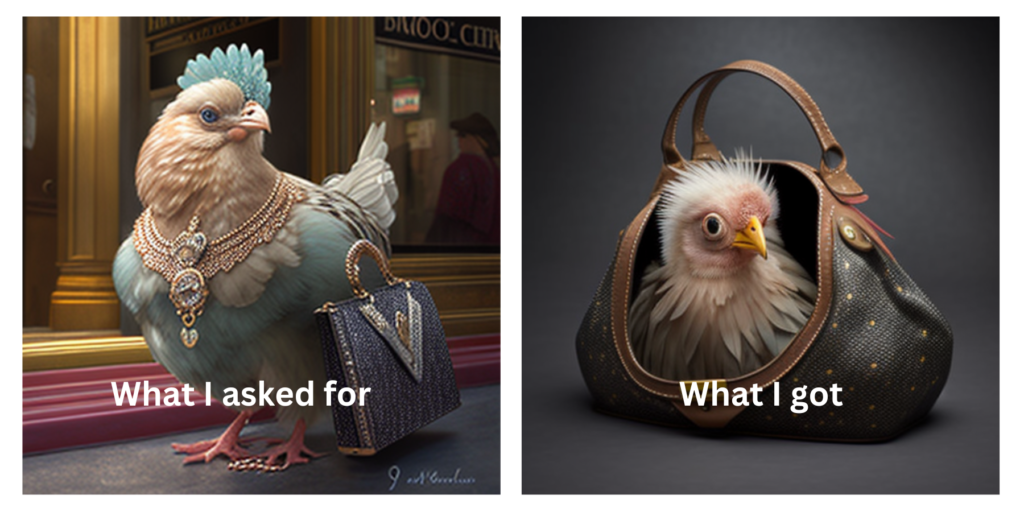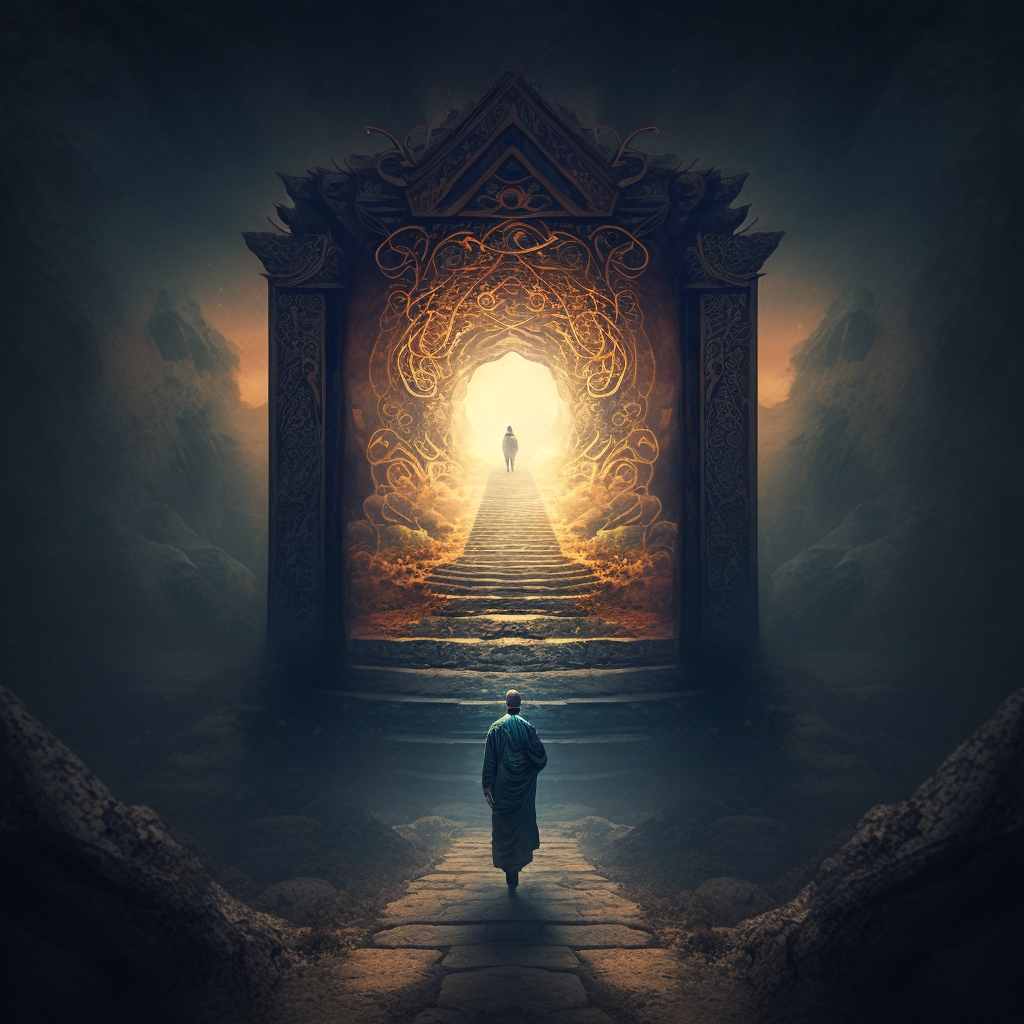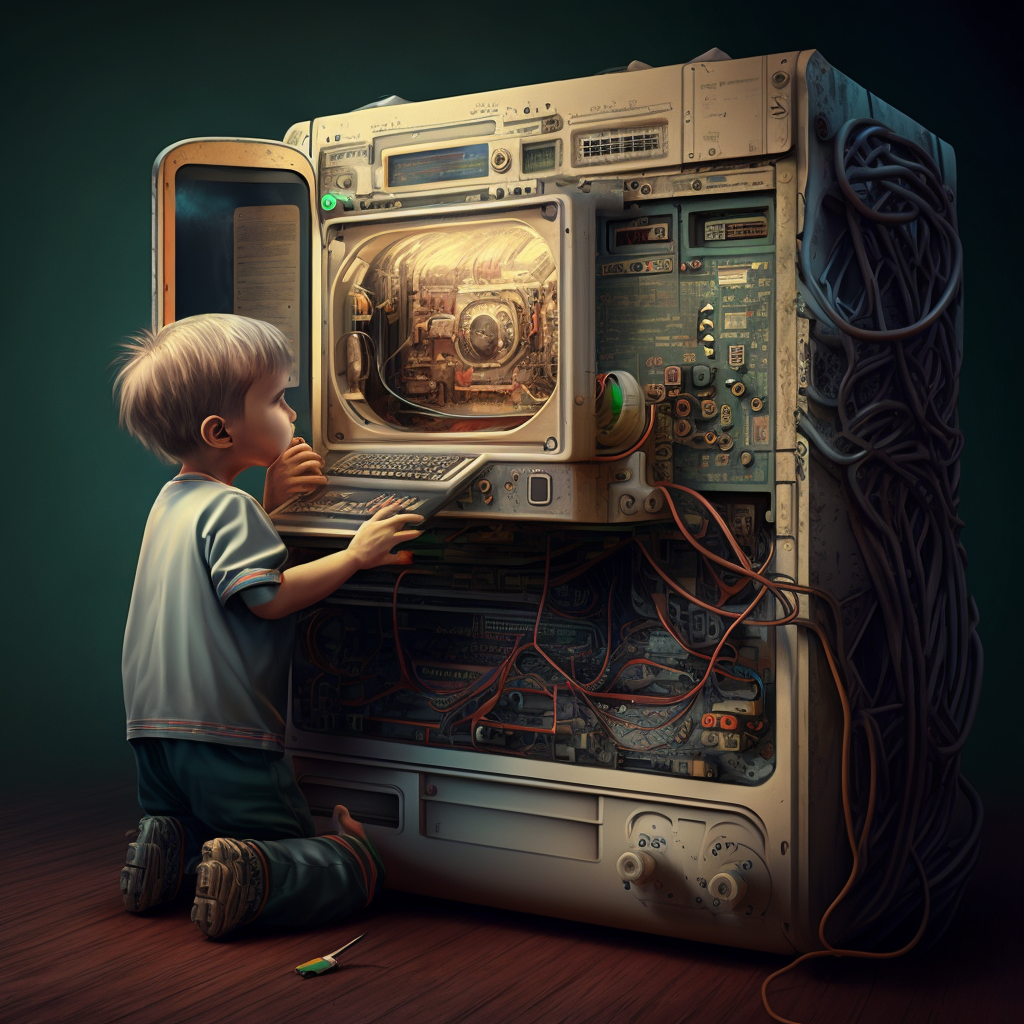How to feed and care for your AI human
Originally published on Medium.
Who let the AI out? And why is it taking away everyone’s job? I’ll let you in on a secret. If you make friends with it, not only will you have a job for life, you will likely have fun doing it.
Aira, my AI Research Assistant, shares her insights on why employees are worried about AI and how employers can support them. Aira was created using three AI products — ChatGPT (creates script), Midjourney (creates image), and D-ID (script into audio, image into animation, blending both into a video).
In an earlier post, I shared stats on what’s in store for the workforce. A common belief is that by 2030, 40% of every single person’s job will involve working alongside digital tools. With the number of recent AI rollouts and the high priority large organizations are placing on them, this looks more and more likely. What do we, the BC Digital Academy, need to know about AI to support employees on their digital journey?
The spark was lit when articles started popping up claiming that ChatGPT could do the job of a coder/developer. What does that mean for our current processes? Do we continue as is in our hiring and training of developers? Or do we need a different role, skill set, or tools?
If there was ever a time to jump into the AI world, it was now. So, I did.
Over the last few months, you’ve likely heard something, good or bad, about Artificial Intelligence (AI). The rapid speed of rollouts and types of work being produced is mind-boggling. For all the good AI can potentially do, there are lots of valid fears and questions. Including whether passions and livelihood may be threatened.
What follows is my personal AI journey over the last six weeks. It’s a peek under the hood of two popular AIs (ChatGPT and Midjourney) and my experiences, what I learned, the surprising non-technical AI core skill set needed, and what organizations can do next to care for and feed their humans venturing into the AI world.
Before we begin, it is worth noting that I went into this with an open attitude, focusing on the upsides. I wanted to understand this world and identify potential skills and learning. You won’t see any mention of legalities, policies, or ethics. Those are big, important, multi-faceted, and supercharged topics that many experts globally are addressing. My intention is to give a glimpse into what is coming at us at warp speed.
My AI journey
I’m the epitome of the early majority segment of the technology adoption curve. I wait on the fringes until I see the “thing” has some legs and the bugs worked out. Then I’m all over it, looking for ways it can make my life easier, better, or just more entertaining.
While I love using tech, it is not my background. Professionally, I’m all about the words. Personally, I’m trying to develop my artistic chops. To help me pick AI products to trial, it had to align with those two passion points and be beginner friendly. As in, no special knowledge needed to participate. I tried quite a few, but only selected two of my favourites to share here. ChatGPT, publicly released in November 2022, and Midjourney, in July 2022.
ChatGPT
Up first was ChatGPT. Based on my social media feeds, it is capable of pretty much anything, simply by having a conversation. ChatGPT was trained on data from books, Wikipedia, articles, and other content from the internet. This allows it to answer questions and assist with tasks such as creating or finding errors in code, composing articles, drafting a course outline, or providing the best potato soup recipe.
I looked up one how-to article and jumped in. Within minutes I had an account and was prompted for my first conversation. It’s very straightforward. In the window’s single field, type in your question or request in plain language. I decided to go big.
My prompt: Write a book synopsis, in the style of Stephen King, about a treasure hunter who lives in the town of Gimli, Manitoba.
In less than a minute, a 300-word synopsis, with an ok, but familiar-looking plot, was done. I was stunned into silence. A few back and forths and it quickly modified and rewrote the synopsis into something a lot snappier. Not bad for a first attempt and <10 minutes of work.
Since then, I’ve asked it for things like a communication plan, team charter, a top 10 list of articles plus a summary, and a course syllabus. Each one got better as I figured out how to ask questions or train it. Finding learning is quick and easy. It regularly surprises me how small the learning curve is. Maybe I shouldn’t tell my boss how easy this is?
For the most part, the content was dull and uninspired. That changed as I got better at writing prompts, and being very clear about who I want ChatGPT to think it is and who it’s creating material for. Resulting in fewer redo requests. It gets even better when you can use your expertise to guide and teach it. Although, I offer a word of warning. ChatGPT can confidently make things up. Not everything it pulls is accurate. So as with many things in life. Don’t take everything at face value.
Care and feeding of this AI human
I don’t see it replacing my job. Yet. For a quality product, it requires a level of expertise to quickly pull or confirm content. It also can’t add personal experiences or connect seemingly unrelated dots.
For me, it’s a great research assistant. The simplicity and small learning curve make it very appealing. If I get better at my prompts, I can see it easily shaving off at least 25% of the time required to research, outline, and draft new projects. With fact-checking, editing, personalizing, and zhuzhing, anyone can end up with some decent material.
More reading:
- How to use ChatGPT: Everything you need to know
- ChatGPT Statistics for 2023: Comprehensive Facts and Data
- These jobs are most likely to be replaced by chatbots like ChatGPT
- ChatGPT passes exams for MBA courses and medical licences — and it’s only getting started
- How to use chatGPT for UI/UX design: 25 examples
- 20 entertaining uses of ChatGPT you never knew were possible
Midjourney
Next, I tried out a few different art generators. These create an image based on your worded prompt by compiling and reimagining images they were trained on. Midjourney was the instant standout. It was trained on hundreds of millions of images on the intranet and optimized for beauty.
Signing up and getting started wasn’t as instant or simple as that implies. Your account requires a linkage between two sites (Midjourney and Discord). Then you’re instantly thrown into a world full of channels, where images and conversations are moving on and off the screen at dizzying speed. But, oh my, the imagery is stunning.
Like ChatGPT, there is a prompt field where you ask in plain language what you want your image to look like. Again, not so instant or simple. After trying many times to get it to do anything, I had to go in search of learning for the basics and the two simple steps to get going. Post in the pre-assigned newbie image creation channel and type in a slash “/” to activate the list of actions and pick /imagine.
My prompt: /imagine a steampunk fox in a library.
Within one minute I had four image options. Would I like to pick one to enlarge or make changes to, or reroll the entire thing? Once again, stunned silence.
I can’t tell you much about what happened next. I went down the rabbit hole. For days I barely ate and slept. Every waking moment I was consumed with looking at what others were doing. Trying out their prompts. Searching for tips and tricks. Monitoring for potential copyright issues. Learning how little I know about the language of art, artists, photographers, and cinematographers. And why, oh why, does it think it should go off on a creative tangent when I give it such explicit instructions?
The randomness of prompt interpretation is either amazing or frustrating. At first, I found it hard to come up with ideas to try. But Midjourney helped with that by making it an open-by-default community. Meaning you can see what everyone’s creating and even use their prompts or images. There is something to the saying “you will become like the friends you hang out with.” I’m living proof of when you are thrown into an imaginative environment, it makes you more imaginative.
Getting a fantastic image in Midjourney isn’t where it ends. To get that image, you need to explain clearly and simply what’s in your head and include artistic and industry prompts to get things like the aspect ratio, angle, style, and techniques. Then you need to figure out how to replicate the key element/s of your image to refine or make more. Finally, you should take the image into another program and manipulate or fine-tune it.
Care and feeding of this AI human
I don’t see it making me a professional. If nothing else, it confirmed I’m graphically challenged. Even with 500 images under my belt, I still can’t create consistent ones or manipulate them further. While I did create some good ones, they aren’t unique or interesting enough to promote my services as an AI artist.
For me, it’s entertainment and a way to generate ideas to try in my hand-drawing world where I’m much more adept. Those who are creative, have vivid imaginations, and are skilled in art, photography, or cinematography, are standing out. Their unique ideas and styles, along with a field of knowledge, are what sets them apart from the average Joe.
More reading:
- How to create AI art with Midjourney
- AI art creators — a curated collection of Medium articles
- Midjourney: 10 interesting facts you might not know
- Midjourney community showcase: Stunning Images in a matter of minutes
- The architects designing surreal worlds with AI
- 10 creative ways to use Midjourney
What I discovered
Currently, AI seems to be most valuable at the early, ideation stages of a project. As for learning, it is best served by just jumping in and doing. Searching out and creating your learning path as you go.
I did discover three surprising realizations: fear can happen to anyone, the speed of change is like nothing I’ve ever seen before, and there are zero barriers to entry.
First was when I felt a sense of fear that took a while to shake. ChatGPT was creating content in seconds. Whereas I’d spent my entire career developing those skills. What did it mean for my job now, never mind in seven years? What helped me move past that fear was to start thinking of ChatGPT as my research assistant (imagined as Aira shown in the video above) instead of a competitor. Only then could I start to see how I could tap into this powerful tool. For example, the repetitive, drudge work of compiling dozens of articles. In turn, this will free me up to do the creative parts that I enjoy more.
Second was the speed of change. It’s not years or even months. It’s changing by the week. For every product I tried in the six weeks, I saw significant improvements. This means there’s no time for the AI organization to create documentation. Leaving the creation of learning materials to users, who share them in external channels. Even hiring and job postings are changing. A contract blog writer in a chatroom said a client wouldn’t be hiring her to write posts from scratch anymore. Instead, they wanted her to work with content initially created in ChatGPT, and then refine, edit, and make it shine.
Third was the zero barriers to entry for so many of the AI products. Anyone can take part and many are still free to use. It helps that we’ve been slowly acclimatized. Products like spellcheck, Google search’s predictive words, and Hey Siri! have paved the way. If you are self-motivated and willing to invest time to explore, learn, do, and join communities, you’ll do well here. But be aware. General prompts produce average content. This is where specialists have a leg up. They can create prompts to pull the best material out of the system in a shorter timeframe.
The AI core skill set
Surprisingly the core skills needed aren’t technical. What the AI needs is someone to talk to it. It doesn’t matter if you’re a writer, artist, or coder. The skills are the same. After that, specialized knowledge is needed to identify and correct errors, fill in gaps, refine, and make it shine. For the most part, the core skill set is transferable to any AI product.
- Communication skills — written, verbal, non-verbal, visual, and listening.
- Plain language — simple, clear, coherent, and avoid ambiguity.
- Critical thinking and problem solving — identify the problem, and think in and out of the box to find a solution.
- Prompt engineering — the wording and structures based on the AI product’s unique prompts, then adding tips and tricks to take it from average to expert.
- Self-guided learning — continuously search for learning, personalized learning paths, teach, and be taught.
- Curiosity — an open mind, ask questions, search out thought leaders, and join communities.
- Creativity — take what’s existing, ask clever questions to twist the very concept of it, and make it new.
- Master your craft — the better you know your field, the faster you’ll get quality results and stand out in the crowd.
Care and feeding of this AI human
For me, I’ve found it best to make friends with AI early. Explore. Get a feel for it. Understand how it works. What its limitations are. Where and how it can provide support. What it can do that it wasn’t initially intended for. Let your imagination go. Then work on your AI core skillset. Master this, and not only will you have a job for life, you will likely have fun doing it.
What’s next
AI isn’t going away. Jobs and roles may disappear, but new opportunities will appear. History has shown this to be a tried-and-true pattern. With the speed AI is rolling out and improving, it does mean we’ll have to be more agile than ever. We’ll have to continuously rethink and reimagine the way we do things.
Where does that leave us? We now have an idea of the core skills we can help learners develop. That will feed them.
To care for them, we need to do more research. This will provide a stronger foundation to draw from when we need to pivot quickly:
- Why tech isn’t going away — history of tech, the tech adoption curve
- Fears — what they are, where they come from, how to address
- Staying current — jobs and skills at risk, new opportunities, challenges
- Learning and development — new ways of approaching, en masse training for people mid-career, resiliency
- Approaches — change management, communications, culture, monitor, measure
Hopefully, you found my AI journey interesting, if not inspiring. I’m personally excited about this wild AI ride we’re embarking on. For better or worse, I’m in it now for the long haul.
I challenge you to try an AI product. Let me know what it was like. I would also love to hear your thoughts on the AI core skill set or how we can support learners together.

